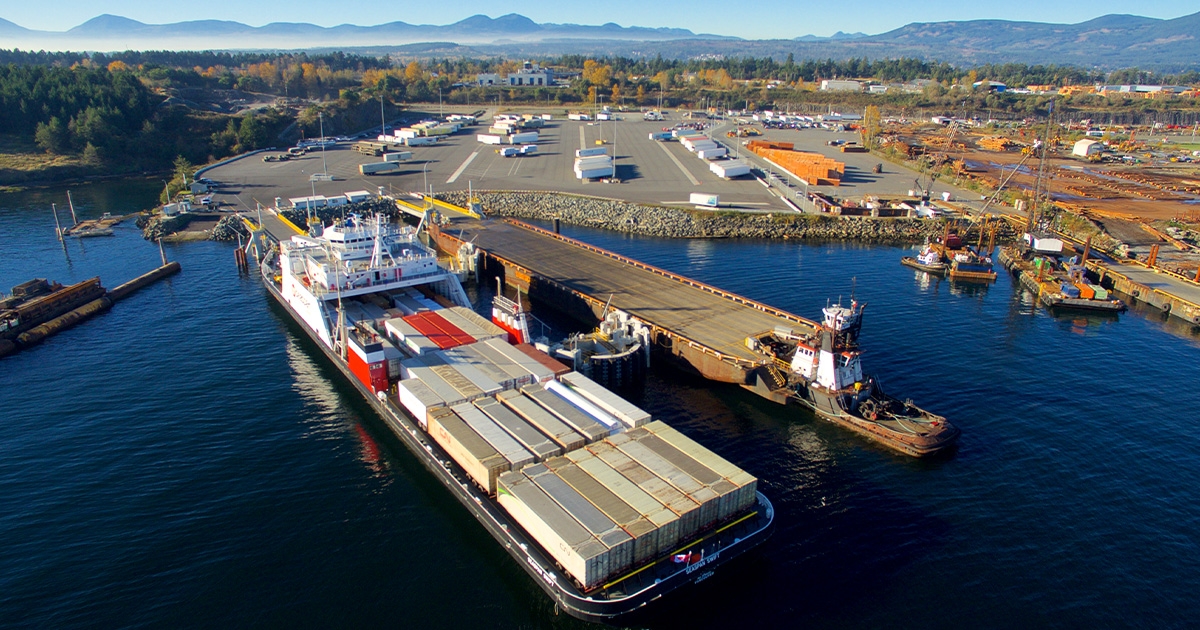The Future of Ocean Tech Begins with Canadian SMEs

Food security, resilient supply chains, energy transition, and the climate crisis—these are a few of the challenges we hear about every day in the news, at work and at home.
They are also challenges that present opportunities with a magnitude so great it is unlikely to find an industry, business, government, or community with an interest in ocean that is not also thinking about them.
In helping solve these global challenges, Canadian small and medium sized enterprises (SMEs) are becoming increasingly competitive and winning with their ocean technology.
PROJECT PORTFOLIO
Canada’s Ocean Supercluster (OSC) projects are collaborative in nature and designed to accelerate the development and commercialization of ocean solutions. More than 120 new ocean products, processes, and services are being made available globally as a direct result of the cluster’s current project portfolio alone. With 70 active projects, teams are comprised of largescale business, research, not for profits, government, and at least one SME partner per project. Instrumental in the problem-solving and innovation of these projects, Canadian SMEs are delivering ocean technologies to improve ocean processes, collect better data, reduce emissions, and increase safety of ocean workers. In the current OSC portfolio, SMEs lead 96 percent of projects gaining access to investment, partners, and markets that might not have otherwise been possible, as well as accelerating company growth, global reach, and competitiveness.
In the first five years of Canada’s Ocean Supercluster, there has been significant focus on enabling: increased capability in remote operations, environmental monitoring and management, and the collection of data; detecting, monitoring and protecting species with technologies that help understand species movement and health including sensors, tracking, and environmental DNA; marine shipping focused on decarbonization including transitionary fuels to renewable diesel to carbon neutral options such as increased battery storage for vessels; as well as working in collaboration with Indigenous Peoples and ocean community partners, and helping grow a diverse workforce and more new ocean companies.
NEW FRONTIERS
This year, the world’s largest technology conference showcased ocean technology expert content for the first time; a telecommunications giant has announced its business interests in aquaculture technology development; and countries around the world continue to come together around our collective ocean opportunity through the High-Level Panel for a Sustainable Ocean Economy.
With the rise of the new blue economy, technology companies are looking at applications in ocean sectors, first use cases, and significant market growth potential. With four of the top 35 best ocean startup ecosystems in the world ranked in Startup Genome’s first Blue Economy report, Canada is well positioned to support those opportunities for companies at all stages.
St. John’s, Newfoundland and Labrador-based CoLab Software partnered with ocean companies Kraken Robotics and Genoa Design through their cluster involvement and ventured into ocean for the first time with a, OSC project that was originally on their technology development roadmap several years down the road. This work contributed to their rapid growth during the height of the global pandemic.
Leading an OSC project focused on offshore inspection in challenging ocean environments, Waterloo, Ontario’s Voyis has expanded into new markets and developed new applications for their technology. For this project Voyis developed the Perception Remotely Operated Vehicle (ROV), where their ROV Skid has already been demonstrated to the U.S. Navy for mine countermeasure and subsea construction applications, with follow-on demonstrations scheduled for 2023.
Katal Energy, based in landlocked Calgary, Alberta, developed a transitionary fuel to reduce diesel consumption and harmful emissions but didn’t initially consider the immediate impact potential for marine shipping. Through Canada’s Ocean Supercluster and building new partnerships across the country, they are now testing their products on Miawpukek Horizon Maritime Service’s icebreaker, the Polar Prince, with exciting early results.
DEMONSTRATED OUTCOMES
With significant momentum building across the entire Canada’s Ocean Supercluster network, project teams and their SME partners are delivering incredible outcomes.
In their OSC project, British Columbia’s Corvus Energy introduced the Blue Whale battery-based energy storage system to help make electrification for larger vessels a reality. In June, Havila Kystruten’s passenger ship Havila Castor out of Norway proved it could sail with zero-emissions using the Blue Whale installed onboard their commercial vessel.
Ontario’s BMT Canada Ltd reached a major milestone with full-scale testing of its Smart Microgrid technology from their OSC project. They have demonstrated continuous power management that minimizes interruptions and provides a clean energy integration solution for remote communities, with potential future adoption for customers in both commercial and military settings.
Graphene Innovation Technologies, operating out of Nova Scotia, announced a significant deal with Eastern Pacific Shipping out of Singapore to supply their innovative vessel coatings as the company expands and revitalize their global fleet of 200 vessels with a focus on decarbonization.
AMBITION 2035
With the longest coastline in the world, the fourth largest ocean territory, and some of the most innovative people on the planet, Canada’s Ocean Supercluster has big ambition for growth of the broader ocean economy in Canada—five times growth by 2035.
This is expected to be driven by energy, seafood, ocean technology, marine transportation, tourism and recreation, and the public sector. It's Canadian SMEs that will help lead the future of ocean technology in the context of this broader ambition. In demonstrated areas of strength in Canadian ocean innovation, SMEs are expanding to meet the increasing global demand for made-in-Canada ocean products, processes, and services now and in the future.
For more information, visit: www.oceansupercluster.ca.
This feature originally appeared in Ocean News & Technology's Magazine December 2022 edition. To read more, access the magazine here.

